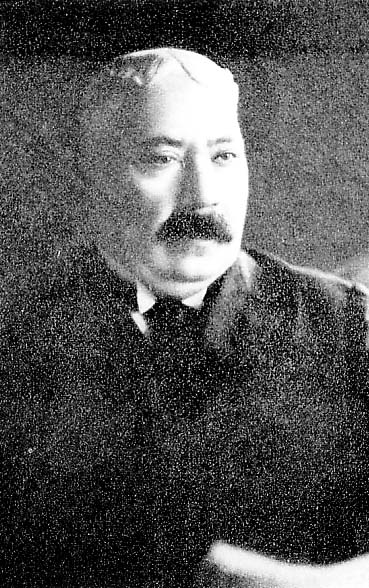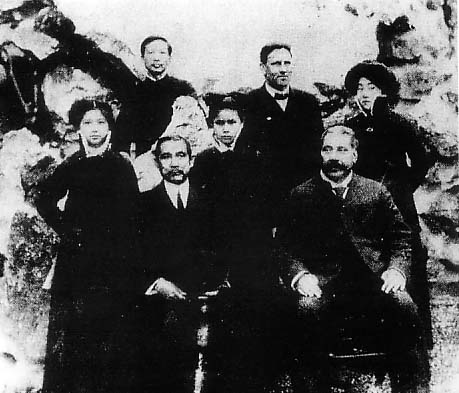Letters
I refer to the papers prepared by Ms. Chiara
Betta of the University of Indianapolis, found on pages
20-21 of your last issue, regarding one of the brilliant
names of Iraqi Jews in the Far East, namely; Mr. Silas (Salih)
Haron Hardoon.
As a starting point, I would like to mention that the word
"Hardoon" or "Hardan" has the same significance
in either Hebrew or Arabic, which goes largely in scale
from "angry, shaken and annoyed" to " stubborn,
fanatic or zealot" to "inveterate". (Genesis
27:33), (Isaiah 19:16), (Hoshea 11:11), (Isaiah 10:9), (Samuel
"A" 21:2), (Zecharia 2:4) etc.
As a matter of fact, Mr. Meer Basri has given a wide space
to Mr. Silas and also to his cousin, Khan- Sahib Ezra Abdallah
Hardoon, in his "Eminent Jewish men of Modern Iraq"
Volume II published in 1993.
The main theme started with Ezra Hardoon of Baghdad, 'who
was a well respected man and a neighbour' whom Mr Basri
came to know in 1932: he was honoured by the British government
with his "Khan-Sahib" surname for services rendered,
during WWI , as he succeeded to convince the prince of Pishtikooh
to stay neutral and not to join the forces against the Allies
( the prince by doing so surely served himself and the British
government as well).
In 1932, Khan- Sahib Ezra Hardoon, needed the assistance
of the Iraqi ministry of foreign affairs, where Mr. Basri
worked, which he eventually got, but upon arriving in Shanghai,
he did not succeed to refute or confute the will which Mr.
Silas left by giving the whole inheritance to his Chinese
wife, which amounted to tens of millions US $, according
to Mr. Basri's version, while some Chinese historians estimate
at hundreds millions (yes hundred of millions US$).
Undoubtedly, all the Chinese historians who dealt with the
story of that singular man were unified in saying that success
changed him into a very vigorous and important person in
the government's higher circles and anywhere else. He maintained
the respectful attention of the political and intellectual
communities, which was a source of great pride to him. His
life was one of full colour, full responsibilities and full
surprises. He bought in 1904 170 mu of land and built a
private garden modelled on Dangguan Garden in : "Dreams
of the Red Chambers": commonly known as 'Shanghai Danguan
Garden' or 'Hardoon Garden'. Its proper name was Ai-Li Garden,
meaning in Chinese 'Garden of a couple in love'.
Before concluding I want to say about the paper of Ms. Betta
that it practically coincided well with Mr. Basri's version.
From my side, I am glad to add a tangible value to the words
given, by sending two photographs of Mr. Silas, which I
obtained during one of my trips to the Far East.
1) His own portrait
2) Sun Yat - Sen's, the commander in arms, at a party given
in his honour, most probably in the Hardoon Garden, by "the
Sephardic Jewish millionaire" Silas Aaron Hardoon (seated
right) April 6th 1912. The women are (left to right), Sun's
daughters, Sun Yan, Sun Wan and his secretary Soong Ailing
(who was at the same time his wife's sister).
Dr. Sun Yat- Sen made Shanghai his home after his 1911 revolution
and lived in Moliere Street. As a matter of fact, Chuang
Kai Shek, when proceeded to make himself supreme and upgraded
in the eyes of the people, he forged an important connection
with the Soong family, contracting a bigamous marriage to
Soong Meiling, the younger sister of Sun YAT-Sen's widow,
Soong Chinghing, who was as well, the sister of Soong Ailing
shown in the picture, being his secretary. The 3 beautiful
sisters were educated in USA, being daughters of a returned
emigre.
I noticed paradoxically that most of the historians had
become not unified in their reports when discussing the
far- away of a very important person of high caliber as
Silas Hardoon:
Some say that when he arrived to Shanghai in 1874 from India,
he was only a doorman 'in a foreign company', some others
said that he was a storekeeper while others said he came
to Shanghai as the 'Man of the Sassoon's!?
Another comment by a Chinese historian said of him: he might
have put up the money for the Beth Aharon Synagogue, but
he was hardly a pillar of religious society, and if any
Jewish Shanghai lander went native, he did. This is an intrusive
comment according to my judgement, as these are personal
matters.
At last, nobody can deny the fact that a very important
road was called in Shanghai as 'Hardoon Rd.' and remained
as such until the communists came to change. In this connection,
I should say that it was a very important road full of many
important buildings, one of which was considered a masterpiece
which is identified in books as (D.V. Woo House) built and
designed by Hudec, born in Czechoslovakia. His innovative
and elegant style added a real flair to Shanghai's architecture.
Silas Hardoon, the real estate magnate and the richest man
in the Far East for a given period, died in 1931 that is
to say 3 to 4 years after the Kuomintang (KMT or Nationalistic)
Government which seized power in Shanghai in 1927.
Edward Yamen
Milan.


If
you would like to make any comments or contribute to The
Scribe please contact
us.